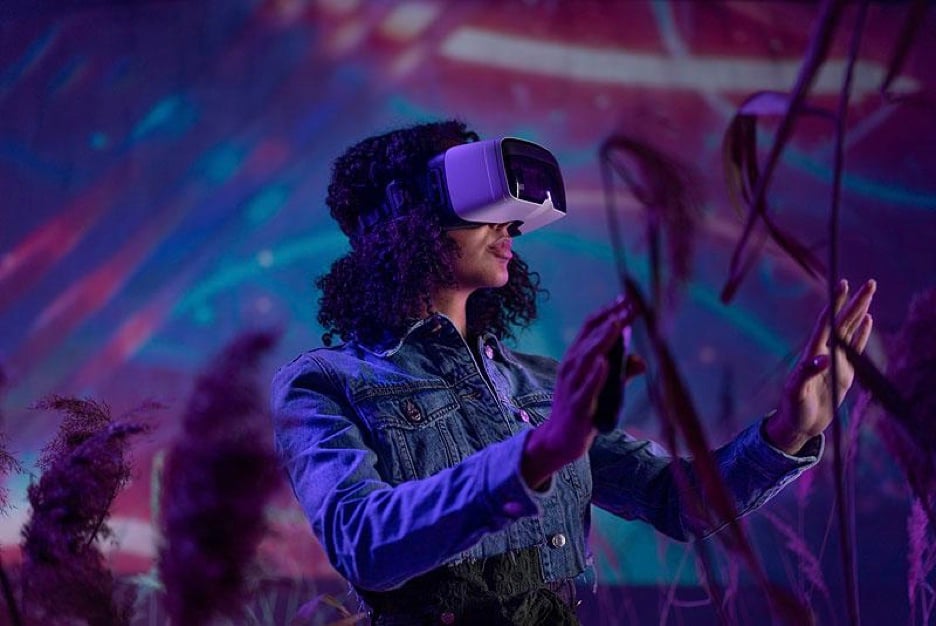
The world of virtual reality (VR) is rapidly evolving, offering a wide range of options for gaming, professional use, and even augmented reality (AR). With so many choices available, selecting the right VR headset can be overwhelming.
This guide is designed to help you make an informed decision by breaking down the key factors to consider when choosing a VR headset.
Understanding the Different Types of VR Headsets
Before exploring the specifics, it’s important to understand the main categories of VR headsets. Each type offers distinct benefits depending on your needs.
Standalone VR headsets
Standalone VR headsets are all-in-one devices that don’t require external hardware like a PC or game console. Models such as the Meta Quest 3 have revolutionized VR by offering portability and ease of use. These headsets come with built-in processors, screens, and batteries, making them ideal for users who want mobility without sacrificing performance.
While often more affordable and cable-free, standalone headsets may have limitations in graphical quality and processing power compared to those connected to high-end PCs.
Tethered VR headsets
Tethered VR headsets connect to a computer or gaming console, using its processing power to deliver enhanced graphics and detailed virtual environments. The Valve Index, for example, provides an unparalleled VR experience with superior image clarity and reliability, though it comes with a higher price tag and a more complex setup.
If you prioritize top-tier visual fidelity and don’t mind being tethered by cables, a tethered headset is the best option. These are particularly suited for gamers and professionals needing intensive applications.
Augmented Reality (AR) and VR Headsets
A newer category of headsets combines elements of both augmented reality and virtual reality. The Apple Vision Pro leads this segment, focusing on spatial computing and advanced tracking capabilities. While these devices are typically more expensive, they offer unique mixed reality experiences where digital objects interact with the real world.
These headsets are best for early adopters and tech enthusiasts willing to invest in future-proof technology. Keep in mind that this category is still developing, with the potential for significant improvements and price adjustments in the coming years.
Crucial Factors to Consider
Now that you’re familiar with the types of VR headsets, let’s dive into the specific features that can influence your decision. For more comprehensive guides and reviews, you can visit vr-game.com.
Display Quality
The quality of the display is crucial for an immersive VR experience. Higher resolutions reduce the screen-door effect, where individual pixels become visible, detracting from the realism. For example, the HTC Vive Pro 2 offers a resolution of 2448 x 2448 per eye, delivering an exceptionally clear visual experience.
Refresh rate is another critical factor; higher rates, such as 120Hz found in the Meta Quest 3, ensure smoother motion and help reduce motion sickness.
Field of View (FOV)
A wider field of view enhances immersion by allowing you to see more of the virtual environment. Most headsets offer FOVs ranging from 90 to 110 degrees, but advanced models push beyond this range for a more natural and encompassing visual field.
For activities like sim racing or flight simulators, a broader FOV can make the experience nearly lifelike, allowing you to catch side glances of competitors or scenery as you would in real life.
Tracking Technology
Efficient tracking technology is essential for accurately mirroring your movements in the virtual world. Inside-out tracking, used in devices like the Meta Quest 2, relies on built-in cameras and eliminates the need for external sensors, making setup easier and more portable.
In contrast, outside-in tracking, seen in the Valve Index, uses external sensors for greater precision, making it better suited for professional or highly interactive applications.
Comfort and Ergonomics
Comfort is crucial, especially for extended sessions. Look for lightweight designs with balanced weight distribution to prevent neck strain. Features like adjustable straps, face padding, and adequate ventilation further enhance comfort.
Headsets like the Meta Quest Pro are known for their ergonomic designs, making them comfortable for prolonged use. Good ventilation also helps reduce fogging and keeps the experience pleasant.
Ease of Setup
A user-friendly setup process is important, particularly for first-time users. Standalone headsets typically offer plug-and-play simplicity, while tethered solutions might require more time and technical knowledge.
Quick setup minimizes downtime, letting you dive into virtual adventures sooner. The HP Reverb G2, for instance, is noted for its straightforward installation, making it an excellent choice for newcomers to VR.
Battery Life
For standalone headsets, battery life is a key consideration. Short battery cycles can interrupt immersive sessions, requiring frequent recharges. The Vision Pro, despite its advanced features, falls short in this area, illustrating the trade-offs between performance and practicality.
Aim for headsets that offer at least 2-3 hours of continuous use on a single charge to ensure sustained usage before needing a break.
Software Library and Compatibility
A rich library of compatible software expands the possibilities of what you can do with your VR headset. Platforms like the Meta Quest series benefit from extensive app ecosystems, providing a wide array of games and utilities.
It’s also important to consider compatibility with existing content, especially if you’re transitioning from one VR system to another. Cross-platform compatibility can maximize the value of your investment.
Top Picks for Different Needs
- Best Overall: Meta Quest 3
- Best for Professionals: Valve Index
- Best Budget Option: HP Reverb G2
- Best Premium Experience: Apple Vision Pro
- Best for Consoles: PSVR 2
- Best High-Resolution: HTC Vive Pro 2
- Most Comfortable: Meta Quest Pro
Choosing the right VR headset involves balancing your specific needs with the strengths of each device. Whether you prioritize portability, visual fidelity, or advanced AR features, there’s a VR headset out there to enhance your virtual experience.
